On an afternoon in March, Sandra Niemi joined Andy Hageman on Zoom to talk about her experience research and writing the recently published biography, Glamour Ghoul: The Passions and Pain of the Real Vampira, Maila Nurmi. Connecting from the West Coast, Sandra’s eyes shimmered with the love and attentive work that went into translating the stories of her aunt’s complex and creative life into this book. Connecting from the Midwest, Andy drew on his acumen as a professor of film and literature so the interview would expand upon his early review of the book. Glamour Ghoul is packed with tales of innovating Vampira in the 1950s, of complicated relationships with the likes of James Dean, Orson Welles, Anthony Perkins, and more, of navigating the #MeToo culture of Hollywood half a century before the hashtag. Plus, it’s wonderfully written and so a deep pleasure to read. We hope this interview sparks your interest to check out the book or to offer extras if you’ve already read it.
Andy Hageman: Thanks so much for joining us today. We’re talking about Glamour Ghoul, and this book just really touched me. It’s such a personal book. It’s full of surprises, and it’s also full of Ms. Nurmi’s real-life experience, behind the character and in the industry and moving around the country.
Sandra Niemi: It’s the things that I always wanted to know about Maila but never knew until she passed, and I gathered all of her writings, so y’know, as I discovered all of these surprises I thought, oh, that’s what she was doing in 1962, and that’s what she was doing in 1970. It was eye-opening.
AH: Definitely. I wanted to start on how you open the book with some of her own words: “Bring on the empty hearses, that I may people them with my enemies. Isn’t that after all, why people commit autobiography? To aggrandize themselves and to destroy their enemies? In any case, the enemy shall be felled quite accidentally as the flailing sort of truth decapitates them. Now, all nonsense aside, you know I have no enemies, only discarded lovers, and they have their memories.”
Niemi: Isn’t that fabulous? When I found that I knew, I’m opening the book that way. That’s Maila’s words. That’s her.
AH: Do you know, when did she write that? Where that sort of was in her life?
Niemi: I don’t know, that particular piece was not dated. She dated a lot of her writings, but that particular piece was not dated, so I don’t know.
AH: I feel like after reading the book it really captured it though, it was a great choice.
Niemi: If had to guess when it was written I would say it was written in the early 1980s. That would be my opinion. It was after Old Dracula. David Niven, I think that’s who the actor was, and he wrote an autobiography called something, Bring on the Empty Horses, I think. Yes, his book is called Bring on the Empty Horses, and so it was after that movie, which was in the early ’80s, that she wrote those words and she changed “horses” to hearses.
AH: Yeah, riffing on culture, as ever.
Niemi: Yes, and she was kind of irritated with them anyway because one of the characters of that movie, Old Dracula, was called Vampira, and she didn’t like that.
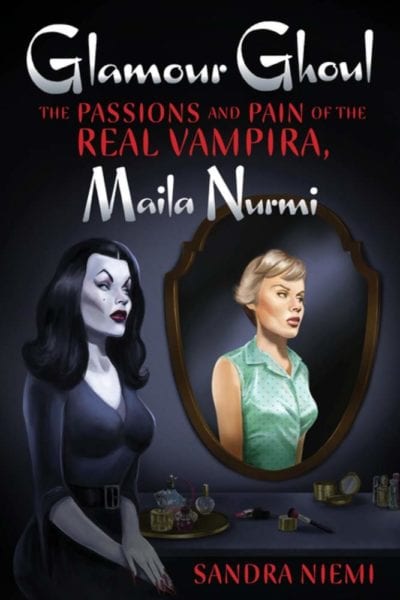
AH: This book feels like a significant part of it is the tale of creativity and intellectual property getting usurped. That part of the industry.
Niemi: She hung on to Vampira as her creation from 1954 until her last breath. She never sold out. Never. No matter how much money she was offered. Vampira was not for sale.
AH: Since you mentioned the 1950s, maybe you can say a little about, through working on the book, or even just reflecting, what do you think about Vampira on the screen in 1954 and ’55? I mean, she sends such a weird mix of signals at a time when women on TV weren’t given agency or intelligence. And yet, some of the time she’s talking about how to make a cocktail and domestic things, but of course, she gives it really goth twists when she does so. Maila’s really doing something very interesting there.
Niemi: Yeah, she was. The 1950s housewife, y’know, was subservient to her husband and wore dresses and maybe a string of pearls and always had dinner ready for her husband and took care of the home front, and that was appalling to Maila. Even when she wasn’t Vampira, that was the last thing she ever wanted to do in her life was to be a domestic goddess. She wanted to be a goddess, but in her own way, and that’s how Vampira was born. But you know she perverted the idea of having a cocktail by saying, you know, if you have an extra eyeball around you can put it in there, bat blood, or whatever the concoction was.
But I remember at a time when Lucille Ball and Desi Arnaz were married on-screen, they couldn’t even share a bed. And here was Maila on television talking about suicide and how sad it was to have an unsuccessful suicide so please buy my Yellow Cross plan—I thought that was just beautiful. She loved the writers. There was a man named Peter Robinson, who was the writer of the original Vampira Show whom Maila loved and thought was a very gifted writer. And then when she went on to another, lesser station years later, she didn’t have Peter, and she figured that’s why the show failed. The original Vampira Show was a huge hit. And pretty soon it went nationwide, the publicity went nationwide.
No matter how indigent she became, she always kept Vampira in her heart. She was not for sale at any price, and that’s how she lived her life.
AH: Do you have any other favorite sort of one-liners or quips that maybe didn’t make it in the book?
Niemi: Well, there are some that didn’t make it in the book. I had probably around eight original scripts that I found. I like the one that she did on New Year’s Eve. It was on Saturday night, and I guess it was January 1st, 1955 when old man 1954 and his diaper came on stage and you know, he was praying that even though he hadn’t created enough havoc and mayhem for 1954, that she would love him. But, no, he didn’t pass muster, and so he failed in her eyes. I like that whole episode about how he created these hurricanes and how he created this assassination plot in the US Congress, none of us hardly remember that. I don’t remember that, and I was but a child when that happened. But yeah, there was an assassination attempt in the US Congress in 1954. Amazingly that was mentioned on The Vampira Show.
AH: Wow. That’s a pretty on-the-nose connection to the recent attack on the US Congress. What do you see as kind of the universal appeal of Vampira? I think she made a certain sense as a really edgy sort of counter-cultural figure in the mid-’50s, but Vampira still has this cult following today. What is it about her that transcends the historical context?
Niemi: I know, she’s like the mother of goth. She made it acceptable to be different. It’s okay to have green hair if you want and a safety pin through your nose and wear all black and cherry-red roses. Women love her because she’s beautiful and powerful and arrogant and domineering and no-nonsense. She was her own powerful woman, so the girls and the women liked that. I suppose some men like her because she’s sexy. She’s different, she’s voluptuous, and she’s untamed, so I think both sexes are attracted to her. In the beginning, which was interesting, is that even housewives weren’t intimidated, or, should I say, they liked Vampira a lot, too. Vampira didn’t turn them off. They didn’t demand that their husbands didn’t watch her or anything. They didn’t feel like they were in competition with Vampira. She had universal acceptance between both sexes from the beginning and still does.
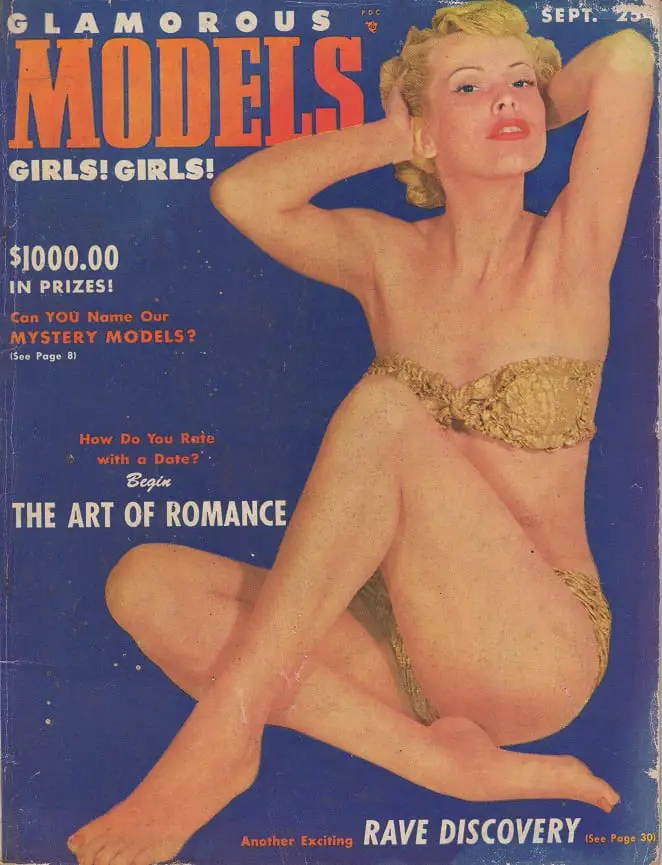
AH: Which is amazing because it seems like for different reasons. That appeal that cuts across populations in the ’50s has to be so different from today. Thinking about this interview and talking to a couple of my friends who are feminist science fiction and horror scholars, we loved how your book got us thinking in all sorts of new ways about how to read Vampira as a feminist icon in genre fiction. Now, you’re pushing it way beyond that. And yet, for a 1955 housewife, it seems like feminist icon really might have made Vampira, perhaps also Maila on her own, threatening.
Niemi: Threatening. Threatening is the word. Because everything was so conservative and pedantic in the 1950s, and here comes this woman, this voluptuous woman with a tiny waist. You know she padded her bust and her hips to make her waist look even smaller, and then came across the screen as no-nonsense. You don’t have to be a bourgeoise housewife making spaghetti for dinner and carrying your slippers to your husband. You are powerful. You don’t have to be subservient. And she was built that way from a child when she first started looking at the comics and noticed the dragon lady of Terry and the Pirates, and then later she saw the Evil Queen from Snow White, and she went, “That’s who I want to be.” She became them, in a fashion, she did. She always wanted to do that. Never did she want to be pigeon-holed into a role of a wife and mother. Her mother tried so hard to get her, “She’ll grow up and she’ll find the right husband and—” No, that wasn’t Maila. She was a free spirit from birth.
AH: When I read that in the book about Snow White. it really brought up my memory of being taken to see that in a movie theater when I was probably five or six. They would replay those movies in the movie houses, and that character just scared my socks off back then. It was really funny to imagine that experience of watching it as a child and being inspired.
Niemi: Well, she was older than five or six, she was probably a young teenager, 14 or something, but she was at that vulnerable age where she thought, “Ha! There she is—she’s beautiful and powerful and in control and who wants to be Snow White? How boring, doing laundry and dishes and ugh, not for me.”
AH: I think of 1954 also as I teach film classes and often start with Rear Window by Alfred Hitchcock, which came out the same year. So that’s 1954, and of course Grace Kelly’s character is so beautiful but doesn’t want to be domestic for James Stewart. And he’s very worried about whether she will be willing to travel. To me, that’s a somewhat edgy version of putting gender expectations in question, but that’s barely moving the needle compared to Vampira.
Niemi: She was large and in charge, yeah. What’s interesting is that the original Vampira Show was only shown locally in the Los Angeles area, yet she became a nationwide—in fact, a worldwide—celebrity. She had fans all over the globe in the ’50s, which is amazing to me. And she loved her time as Vampira, and then sadly, too soon it was over.
AH: Did she receive fan mail through KABC?
Niemi: Yes, they sent fan letters to KABC, and she got them from there. Maila was inundated with fan letters. She couldn’t possibly read them all, but yes, they just came in in massive amounts, so she was popular, especially after she made a two-page layout in Life magazine. That’s what started her fame, and so that’s how she was known, and people wanted to see The Vampira Show. That’s when KATU offered her money to syndicate Vampira and have shows all over the United States with different Vampiras. And Maila said, “Nope, not gonna happen. Vampira is mine.” And I’m glad she hung on to her.
AH: That’s such a brave choice. It really is a testament to how crucial and vital that character, that identity was to her. That it wasn’t just a commodity or a pathway to some wealth for her.
Niemi: Right. No matter how indigent she became, she always kept Vampira in her heart. She was not for sale at any price, and that’s how she lived her life. Even though sometimes she didn’t have food, and sometimes she didn’t have electricity, and she never drove, she never owned a laundry machine, she never owned a dryer…it was a tough life, but she never sold out.
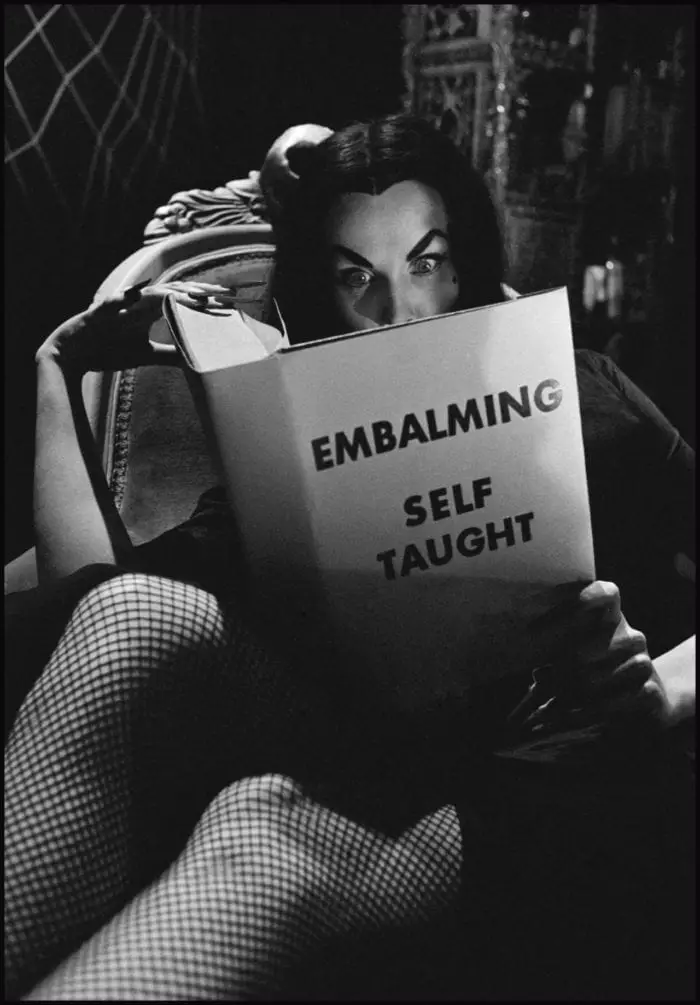
AH: The website where I’ll be publishing this is a site for people who are interested in Gothic and horror stuff that runs the gamut, from an article that is about Vincent Price on The Muppet Show through gorier stuff. Personally, I’m keen on sort of family-friendly but strange fiction, so Vampira is a perfect fit.
Niemi: Yes, yes, and that was Maila. That was Vampira.
AH: So, I’m wondering, I think the audience for this interview probably would be interested in when you went through her papers. Did she write about the movies they showed on the Vampira show or maybe on things you didn’t include in the book where she talks about why this goth identity and macabre personality on TV was important?
Niemi: You know, she did not. Every once in a while, she would mention the name of the movie that they were showing and say something about “We’re going to return to our movie now where…” And she would name the female character who was going to murder her husband, and then she’d say, “Smart lady,” or something like that. But no she never mentioned anything about Goth. It has, as I interpret it, or, as I understand it, her little segues, the five or ten-minute little intermissions between parts of the movie were all kinds of different things. You know, one time it was a fashion show. I think I mentioned that where she mentioned appropriate attire for a hanging or for a guillotining.
And one time James Dean was on there, but he was only filmed from the back where he was a snoring library visitor, and there was another time where she wore what she called a people’s skin coat. I don’t think I mentioned that in the book. She had sewn a coat out of different fabrics because she was a seamstress, and she worked on set and said, “This is my people’s skin coat—isn’t it lovely?” You know, and this is my friend, you know, David, and this is my friend Margaret, and it’s funny. But you know, then it’s like “What? Oh My God! She’s killed people and skinned them and made a coat of their skin!” I mean, people knew that wasn’t true, but that was pretty courageous to come on TV and talk like that, and the censors allowed it, which is a whole other story. Maybe the censors allowed it because it was on really late, like till midnight.
Yeah, Marlon Brando. Nobody knew Marlon Brando, nobody knew who James Dean was, nobody knew who Elvis Presley was, nobody knew who Anthony Perkins was when she met them. They were unknown, but she knew something about them.
AH: It still seems surprising to go on TV and say something like that. Did she have any accounts of things that the censors deemed to be too outrageous or too problematic?
Niemi: Yes, when she went to a lesser station, KHJ, in 1956, where she said everything was terrible, the sets were cheap, and they had tried to imitate the original Vampira Show and failed. She didn’t have her death’s head sofa, she didn’t have her marble coffee table, she didn’t have her poison cocktail bar, and she had a lousy writer. So she said on air, and sometimes she would ad-lib, you know, because the writer was so horrible she would just bring in her own material and she had been cautioned that she’d better stop that because you know, you never know—is it going to pass the censors? And one night, she said, “My poor sister was in prison for raping a snake.” Bam, the censors were furious because she had said rape. And so, the next time she was on air, she had to wear like a muffler around her neck to hide her neck and her cleavage—that was her punishment. “Okay, if you’re going to be that way, we’re going to make you do this.” So…and the show didn’t last. I think it was signed for 13 weeks, but I think it only lasted for 11 weeks before it was canceled.
Sometime in August, I think it ran. It was in August of ‘56 that it was canceled, which led to her filming Plan 9 from Outer Space in November that year because she ran out of money.

AH: Maybe you can share a little bit about Plan 9. It’s in the book, and to me, as a reader, it was fantastic just to see this as you document her putting the script on the table for a while and you know, not necessarily wanting to jump on it. For many of us who are into cult movies, we know Ed Wood, but then the Johnny Depp film with Johnny Depp as Ed Wood really kind of revivified the director. Maybe you can share a little bit about that as a teaser for your book, just some of what you found and what you found interesting in her journals—her writing about her and Ed Wood.
Niemi: Yes. Her own personal life was in turmoil then. But she did say Ed Wood was very, very pretty and that after a few years she realized, “I admire him because he also never gave up,” you know? When he had all this criticism about what a lousy director he was he never gave up. He kept producing those lousy movies because he loved them, and he loved what he did so she gave him kudos for that. Ed had a megaphone on set, as you can imagine, and I think it was yellow. A yellow megaphone! She worked for two days, not for one.
She went to the set all dressed up as Vampira. She was in drag and her skirt was too tight to go up the stairs of the city bus so her boyfriend had to carry her and plunk down in a seat. He was belligerent and arrogant and a nasty man, but she was madly in love with him. She went on set that first day and asked Ed, “Do I have to say these words that you put in the dialogue? I just don’t want to, I kind of just want to play the character mute,” and he said, “Ah, sure we just want your name anyway.” Which was Vampira, and she said, “Yes, this movie was so horrible, I co-starred with a dead man,” and that was a Bela Lugosi. He had passed away, yet he’s in the movie from you know from other pictures that Ed Wood had of him, and then, of course, Bela Lugosi, or is it Ed Wood’s dentist or something, played the part with the cape—you know that’s not really Bela, that’s his dentist or something.
AH: Yeah.
I just want [readers] to know that she was a free spirit, and it’s okay to follow your dreams. I knew something else, that if I didn’t write this book with all the information that I had, and Maila’s life was closed up, that Maila would only be a footnote in history, and I couldn’t let that happen.
Niemi: Just paper plate flying saucers, oh my word, poor Maila, and she thought that would be the death of her career, that she would never work again. But what happened is it made her famous. That’s what people remember because they don’t have the original Vampira Show, they only have that, and if you saw RH Green’s documentary Vampira and Me, then you got to see her on The George Gobel Show, which was the number one TV show at the time, and you got to see a little bit of Red Skelton, I think, which I saw on TV in 1954 at the age of seven. Then Maila had to contend with her boyfriend who was there and just being belligerent and was going to beat up Ed Wood, you know, and shove the megaphone where the sun don’t shine and oh, it was horrible. And Maila was beside herself, and she had to return the next day, but the boyfriend didn’t come with her. He just carried her on the bus and left, and she had to find a ride home at wrap.
But what I find bizarre—it really is, it’s striking—was that Ed Wood’s Plan 9 was filmed the last week in November of 1956, and two weeks before Christmas, she had an apartment fire.
Well the boyfriend finally left, and there’s a picture of Maila sitting on the sofa with no makeup on and an old house dress, and she’s got her arms wrapped up in bandages and she’s cradling a cat. Now you look at the vision two weeks before with Plan 9 with Vampira, right, and you know, in this stunning outfit and she’s gorgeous, then you look two weeks later, and that’s who she really was she was—this little lost lady sitting on a couch cradling a cat with bandaged arms.
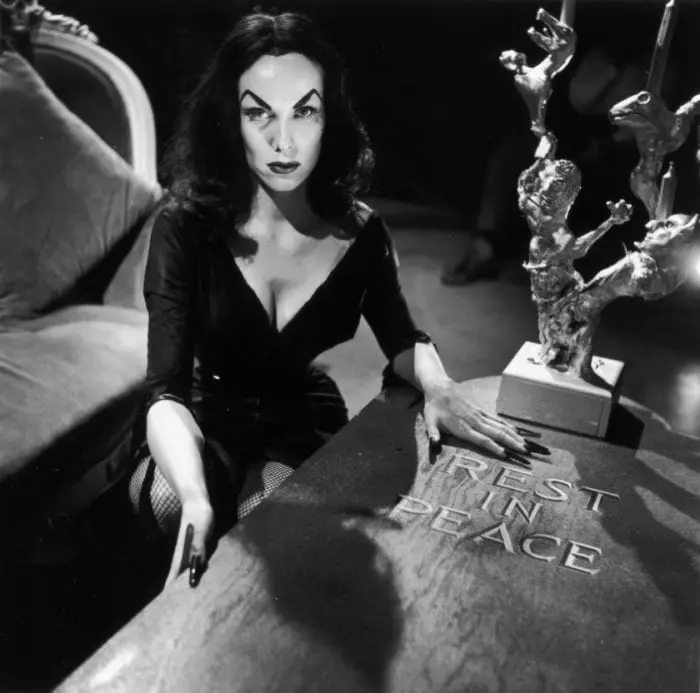
AH: That is a stunning image of the contrasts in her life, as you’ve captured it.
Niemi: It was bad, yeah.
AH: On that note, the subtitle of the book really draws us into the passions and the pain. You mentioned James Dean earlier, and I mean my jaw just hit the floor many, many times, as I was reading about Orson Welles and Marlon Brando and Elvis Presley and on and on.
Niemi: Uncanny isn’t it? She was always right there at the beginning of their careers. At the beginning. Yeah, Marlon Brando. Nobody knew Marlon Brando, nobody knew who James Dean was, nobody knew who Elvis Presley was, nobody knew who Anthony Perkins was when she met them. They were unknown, but she knew something about them.
AH: I’m curious: in reading about all those complicated relationships, what sort of things do you hope readers still take away? I think this book could appeal to people because “Oh, we get this extra glimpse into James Dean’s nighttime life at Googies in Los Angeles and Hollywood,” but I feel like you give us a lot of interesting material while keeping the focus on her. What do you hope people take away from reading about her complicated relationships with all these other complicated people?
Niemi: I guess I hope it comes through that she was very intelligent. She had a great sense of humor. And that she never sold out. She stayed true to who she was and to her dreams, even though life was very difficult for her for many years, for decades, and she went through it mostly alone. And yet she survived in Hollywood, the backstabbing capital of the world. One foot forward, and she kept going. And I want them to know that she was passionate about animals, you know. Everything that she hoped to be successful in was and to make money she wanted to be given to animal shelters, animal abuse, animal neglect, to veterinarians to spay and neuter animals. She loved all animals and more than people. So I just want them to know that she was a free spirit, and it’s okay to follow your dreams. I knew something else, that if I didn’t write this book with all the information that I had, and Maila’s life was closed up, that Maila would only be a footnote in history, and I couldn’t let that happen. I couldn’t. Well, how would I feel if I didn’t let the world know? She deserved a little immortality because she had such an incredible life, and I wanted people to know about that.
AH: Wow that’s such a lovely sentiment, I really appreciate that.
Niemi: Thank you.
AH: Two more questions for you, Sandra. One is, these days I feel like a lot of kind of interesting, edgy, horror stuff comes out of Scandinavia, and so here we’ve got this Finnish American family, and I wonder, as you think about Maila and about yourself, do you sort of see that Scandinavian or Finnish family roots playing a role in the attraction to weird things?
Niemi: Well, Let’s see. Maila’s mother was born in the United States of Finnish immigrants, and her father came from Finland. I have some Finnish friends, and I just recently asked my friend if it’s true that Finnish people are morose? And he goes “Yes, we are all morose. How can you tell when something is funny? This is how I look. When something’s agonizing? This is how I look.” You know, there was no change in the countenance at all, but he says, “It’s so dark here, for so much of the year, and so much snow, there’s nothing to do here for most Finns but to drink and be morose.” And he doesn’t drink, but he said, you know that’s just the way Finland is.
So, I thought, well, maybe that was in Maila’s blood from the beginning, just to be morose and think of other ways to live, rather than cooking and cleaning. But my grandfather, Maila’s dad, was like a gadabout, and he was very social, and so was my dad, just like his father. Maila wasn’t that way; she was shyer, more introverted, believe it or not. Her mother, I remember her as being very direct and not the warm and fuzzy type of grandma at all. She was kind of—I don’t know—short-tempered, and I don’t know, I loved her. She was different, but you know what? The book is going to be published in Finland. It’s going to be translated into Finnish, and the Finns are very proud of other Finns.
AH: That’s great—that’s exciting! I got to go to Helsinki a few years ago. I was there for a conference and spent about a week in the city. I had a great time there, where my love of licorice, coffee, and Moomins fit right in!
Niemi: Did you go in the summer?
AH: I did, yes. Fortunately.
Niemi: I haven’t been to Finland, but I heard it’s very clean. Everything is very pristine, and I want to go to Helsinki and other parts. A big article on the book appeared on two pages of the Helsingin Sanomat, which is the largest newspaper in Helsinki, and so that was encouraging. Yeah, and something else I was going to ask about Helsinki, did you happen to go to any cemeteries?
AH: I don’t think I did.
Niemi: Because I heard that they’re always decorated and pristine. I heard that from my mother, who was Finnish too. My mother and father were both full-blooded Finns.
AH: Maybe for a book tour, you’ll get to go if travel is possible again.
Niemi: Wow, to go back to my ancestral homeland would be so awesome.
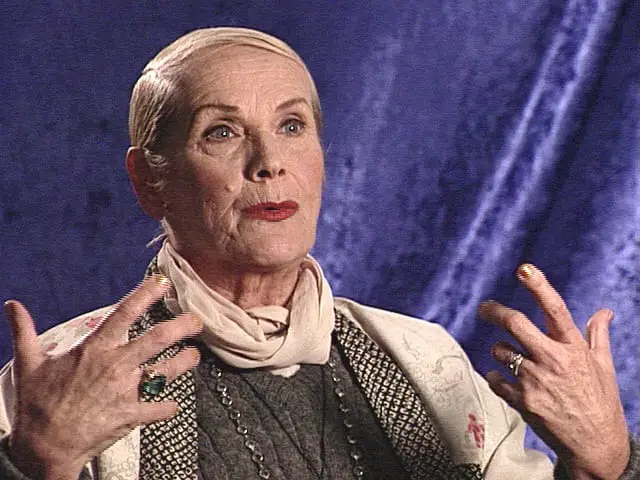
AH: Alright, a final question. The book is personal for you throughout, but towards the end, we see your personal reconnection with Maila and another reconnection that I don’t want to spoil for readers. I thought, maybe we could end with you commenting on that visit with Maila and what it’s meant to you to do the research, to discover these things about her, and to get responses to your book.
Niemi: Well, I was with Maila the last week in August of 1989. I had not seen her for 32 years, and this is my first and last opportunity to see her, adult to adult. I went there because I had been obsessed with her my whole life and never knew anything about her because she didn’t have a phone. When my father, her brother, died in 1977, and I enlisted the help of the Red Cross to find her. We couldn’t even find her then. So, she didn’t find out that her brother died until 12 years after the fact. I found her through Star magazine, and she was in the middle of the lawsuit. Yet, when I went to see her, we never once mentioned that lawsuit. I think she was grateful for that because it had consumed her thoughts for so long.
I wasn’t interested in a lawsuit. I wanted to know who she was. I wanted to know her favorite foods, her favorite color—her favorite color, by the way, was jewel tones. And I wanted to know what she did with her life, where she went, who her friends were. I know she had a dog named Bogey and a pigeon named Stinky, and we had such a good time. I was just thinking today that the week I spent with Maila was probably the happiest week I’ve ever had in my life. We had fun. We laughed. There was never a lull in the conversation. I mean, we just chattered and chattered and chattered, and I loved her. She was everything I imagined. I went to an acting class she was teaching. It was in a friend’s garage, and I think he held it like once a week. Maila put her arm around my shoulder and put her face up by mine and asked her friend, “Do you think my niece and I look alike?” And he goes, “In the eyes.”
I’m just so happy and grateful that we had that week together. She was 66, and I was 42. We went on Melrose, we went to the Beverly Hills Hotel for brunch. Boy, did she put on the dog. I mean she changed, she was regal, and she was famous again, and she was looking around to see, you know, if she’d need to give out some autographs. Oh gosh, we went out to lunch and dinner every day. We took lots of tours around Hollywood, and very few people were ever allowed in her inner circle, inside her house. Maybe Dana Gould and I are the only ones that were ever allowed inside her home. I spent the night there, on the floor with my aunt and her dog, and we got a little drunk. Not exceedingly so, but you know, a little bit tipsy, and that was fun. I got to experience that, and then the next day I had to go, and she insisted that I take $50, which she pulled out of her sleeve. I bought her a subscription to People magazine when I got home with that. But I miss her. I hope she’s happy with the book. I hope her spirit is up there and soaring and she’s happy.
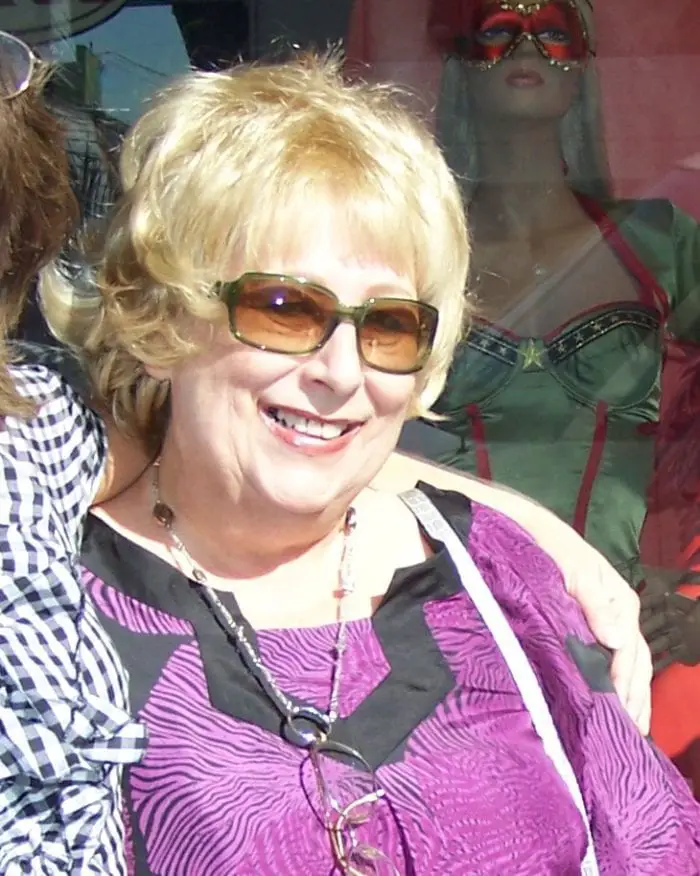
AH: I imagine she is. It’s a really loving tribute, and for people like me who only knew a little about who Maila and Vampira were, your book is just super riveting. It’s such a powerful story of ingenuity, I mean just reading about her designing the clothes right, you see Vampira in Plan 9 and get this book and realize, oh, that’s coming out of a childhood where she’s teaching herself how to see a dress in a window and remake it for herself. Amazing!
Niemi: Agreed, she was amazing!
AH: I think it’s a great book. Thanks for taking the time to talk today.
Niemi: Oh, thank you. I’ve really enjoyed this, thank you for sharing her story and mine.
Thank You to Aly Haugen for the transcription.


